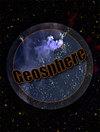印度中部构造带:一个罗迪尼亚超大陆形成碰撞带及其与格伦维尔造山带和斯韦诺威造山带的类比
IF 1.7
3区 地球科学
Q3 GEOSCIENCES, MULTIDISCIPLINARY
引用次数: 0
摘要
在罗丁尼亚超大陆的古地理重建中,推测1.1-0.9 Ga的环地球碰撞带围绕印度东南海岸,包含罗丁尼亚时代的东高止省。但东高止特省可能直到550-500年前才与印度大陆融为一体。相反,长约1500公里、东向的印度中部构造带为连接1.1-0.9 Ga的环全球碰撞带提供了另一种选择。高度构造化的中印度构造带是由早新元古代的北印度板块和南印度板块碰撞形成的。在总结了印度中部构造带不同地壳域的最新发现的基础上,我们认为1.03-0.93 Ga碰撞涉及逆冲作用,导致低品位变质异位单元在高品位基底岩之上侵位;地壳尺度、急倾、造山带平行的逆扭剪切带发育;同碰撞英质岩浆作用;伸展掘出对造山作用的退化。这些特征与同时期的格伦维尔造山带和斯康诺威造山带所报道的相似。我们认为罗迪尼亚的1.1-0.9 Ga环全球碰撞带从澳大利亚-南极陆块向西摆动,并穿过大印度陆块的中心,其中大部分是在1.0-0.9 Ga焊接的。由此可见,从1.1 ~ 0.9 Ga以前的古地磁资料得到的印度古地理位置可能分别对应于北印度块体和南印度块体的位置,而不是整个大印度陆块的位置。本文章由计算机程序翻译,如有差异,请以英文原文为准。
The Central Indian Tectonic Zone: A Rodinia supercontinent-forming collisional zone and analogy with the Grenville and Sveconorwegian orogens
In the paleogeographic reconstructions of the Rodinia supercontinent, the circum-global 1.1–0.9 Ga collisional belt is speculated to skirt the SE coast of India, incorporating the Rodinian-age Eastern Ghats Province. But the Eastern Ghats Province may not have welded with the Indian landmass until 550–500 Ma. Instead, the ~1500-km-long, E-striking Central Indian Tectonic Zone provides an alternate option for linking the 1.1–0.9 Ga circum-global collisional belt through India. The highly tectonized Central Indian Tectonic Zone formed due to the early Neoproterozoic collision of the North India and the South India blocks. Based on a summary of the recent findings in the different crustal domains within the Central Indian Tectonic Zone, we demonstrate that the 1.03–0.93 Ga collision involved thrusting that resulted in the emplacement of low-grade metamorphosed allochthonous units above the high-grade basement rocks; the development of crustal-scale, steeply dipping, orogen-parallel transpressional shear zones; syn-collisional felsic magmatism; and the degeneration of orogenesis by extensional exhumation. The features are analogous to those reported in the broadly coeval Grenville and Sveconorwegian orogens. We suggest that the 1.1–0.9 Ga circum-global collisional belt in Rodinia swings westward from the Australo-Antarctic landmass and passes centrally through the Greater India landmass, which for the most part welded at 1.0–0.9 Ga. It follows that the paleogeographic positions of India obtained from paleomagnetic data older than 1.1–0.9 Ga are likely to correspond to the positions of the North and South India blocks, respectively, and not to the Greater India landmass in its entirety.
求助全文
通过发布文献求助,成功后即可免费获取论文全文。
去求助
来源期刊

Geosphere
地学-地球科学综合
CiteScore
4.40
自引率
12.00%
发文量
71
审稿时长
6-12 weeks
期刊介绍:
Geosphere is GSA''s ambitious, online-only publication that addresses the growing need for timely publication of research results, data, software, and educational developments in ways that cannot be addressed by traditional formats. The journal''s rigorously peer-reviewed, high-quality research papers target an international audience in all geoscience fields. Its innovative format encourages extensive use of color, animations, interactivity, and oversize figures (maps, cross sections, etc.), and provides easy access to resources such as GIS databases, data archives, and modeling results. Geosphere''s broad scope and variety of contributions is a refreshing addition to traditional journals.
 求助内容:
求助内容: 应助结果提醒方式:
应助结果提醒方式:


